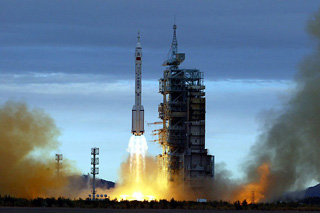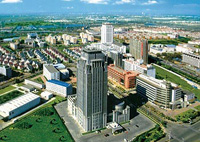
 China Tours
China Tours Tibet Tours
Tibet Tours China Theme Tours
China Theme Tours Off The Beaten Track
Off The Beaten Track Yangtze Cruises
Yangtze Cruises China Trip Planner
China Trip Planner Travel Agents
Travel Agents


We had a wonderful time in Tibet. We have learned a lot about this unique destination because of the wonderful guide Degyi who is so knowledge and always available towards our tours. We stayed at the Shangri-La Hotel Lhasa, and we would never imagine a Tibet travel could be so nice and amazing without the help of Degyi.
Also, thanks a lot to our Tibetan driver Mr.Wongdun for his safe driving and a good sense of service along the way.
We shall return Tibet in the near future!
P.B. and A. A - Europe
Tibet Travel
June 2018 (Private Tibet Journey from Kathmandu)

 In 1900, China had no modern science and technology at all - fewer than 10 people in all of China understood calculus. Now, in the early 21st century, the gap in high-technology research and development between China and the world's advanced countries has visibly shrunk; 60 percent of technologies, including atomic energy, space, high-energy physics, biology, computer and information technology, have reached or are close to the world advanced level. On October 15, 2003, the successful launch of the "Shenzhou V" manned spacecraft made China the third country to master manned spaceflight technology. According to the Moon Probe Project started in February 2004, China will launch unmanned probes to the moon before 2010, and gather moon soil samples before 2020.
In 1900, China had no modern science and technology at all - fewer than 10 people in all of China understood calculus. Now, in the early 21st century, the gap in high-technology research and development between China and the world's advanced countries has visibly shrunk; 60 percent of technologies, including atomic energy, space, high-energy physics, biology, computer and information technology, have reached or are close to the world advanced level. On October 15, 2003, the successful launch of the "Shenzhou V" manned spacecraft made China the third country to master manned spaceflight technology. According to the Moon Probe Project started in February 2004, China will launch unmanned probes to the moon before 2010, and gather moon soil samples before 2020.China's development of science and technology and its system of granting science and technology awards are underpinned by the basic Law on Progress of Science and Technology promulgated in July 1993. This stipulates the objectives, functions and sources of funds, and the system of rewards for science and technology development. The Law on Popularization of Science and Technology promulgated in June 2002 makes a societal goal to popularize science and technology knowledge among all citizens. Local regulations have been issued for attracting talented people, ensuring investment in science and technology, and developing high technology.
Since the 1990s, state budgets for science and technology have greatly increased. In 2004, the appropriation for science and technology reached 97.55 billion yuan, 19.5 percent more than in 2003; the government spent 184.3 billion yuan on scientific research and development, 19.7 percent more than in 2003, accounting for 1.35 percent of GDP, the highest in China's history. In 2004 there were 55.75 million scientific and technological personnel in state-owned enterprises and institutions, and the number of scientific and technological personnel out of every ten thousand employees had increased from 870 in 1985 to 3,900. Over half the academicians of the Chinese Academy of Engineering are scholars who have returned during the past two decades after finishing their studies abroad.
From 2002, the national strategy for developing science and technology shifted from following on the heels of others to making independent innovations and technological strides, aiming at the international sci-tech heights. According to a national plan, by 2005 China should be in the world's advanced ranks in certain fields, attaining or approaching the front rank in some important scientific and strategic hi-tech fields; expenditure for developing experimental and research science will increase to over 1.5 percent of GDP; by 2010 a preliminary national innovation system will be established, the building of basic science and technology conditions will be obvious, national key bases for scientific research will reach the world advanced level, China's innovation ability in key fields will soar, and expenditure for developing experimental and research science will reach two percent of GDP; by 2020, a relatively complete national innovation system will be in place, expenditure for developing experimental and research science will account for three percent of GDP, and China's competitiveness in science and technology will step up to the world's first rank.
 New and high-tech development zones
New and high-tech development zones
China has built up thousands of new and high-tech development zones. In the 53 state-level new and high-tech development zones, a great many sci-tech research results have been put into use in production. By 2004, there had been over 30,000 high-tech enterprises in these zones, 20 of which had annual production values over 10 billion yuan, more than 200 over five billion yuan, and 3,000 over 100 million yuan. In these zones, the average growth in major economic indicators has been maintained at 60 percent per annum for 12 years running, and they have become important engines of national economic growth.
Private science and technology enterprises have also made great headway, some becoming group corporations with annual output values of anything from several hundred million up to several billion yuan. Their high-tech products now account for over half of the domestic market for such products.
Establishing export bases for new and high-tech products in selected high-tech industrial development zones is an important part of the government's plan for developing trade through science and technology. The first designated export bases, selected because of their rapid overall development, rich talent, excellent equipment, and rapidly growing exports of high-tech products, include the Beijing Zhongguancun Science and Technology Park and high-tech industrial development zones in Tianjin, Shanghai, Heilongjiang, Jiangsu, Anhui, Shandong, Hubei, Guangdong, Shaanxi, Dalian, Xiamen, Qingdao and Shenzhen. The Pearl River Delta, Yangtze River Delta and the Beijing-Tianjin region have the greatest concentration of such export bases, consequently export volumes of new and high-tech products from these areas account for over 80 percent of the national total.
China Trip Planner | Travel Agents | About Us | Why Us | Contact Us | How to Pay | How to Book - Terms & Conditions | Site Map
Copyright © 2010 - 2030 All Rights Reserved.


 0086-28-85711328
0086-28-85711328 0086-28-85546015
0086-28-85546015



